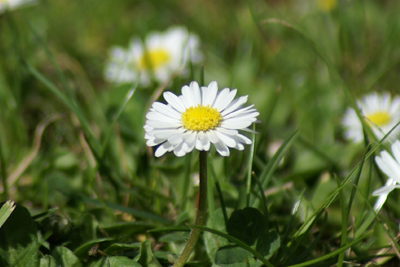My four-year-old daughter and I love wandering around the neighborhood looking for bees. She listens with fascination to the sound of their buzzing wings, watches their waggling dances, and enjoys their bright coloring. Her curiosity has sparked my own interest in bees, and together we want to make our yard a welcoming place for them.

Besides being wonderful to watch, bees play a vital role in pollinating our plants and garden. Since we can’t keep a beehive ourselves, I’ve researched ways we can help bees. In this article, I’ll discuss why bees are crucial, how we can support them, and suggest some bee-friendly plants for different USDA zones in the United States.
Why Do We Need Bees?
Bees are essential pollinators, helping farmers grow crops that make up about one-third of the food we eat. In fact, honeybees alone contribute approximately $15 billion to the US economy annually through pollination services.1 The Californian almond industry, for example, requires nearly two million bee colonies for successful pollination.2
While we could survive without bees, we would lose many fruits and vegetables that rely on bee pollination, including apples, broccoli, melons, and almonds. For instance, lemons, a favorite addition to my daily water, would become prohibitively expensive without bees to pollinate the trees. While wind-pollinated crops like rice and corn would still be available, our diet’s diversity would diminish considerably.3
Since 2007, bees have faced significant challenges, especially due to colony collapse disorder (CCD), a phenomenon where stressed worker bees abandon their queen and hive. While CCD is on the decline, we can still do simple things to support bee populations and promote their health.
How Can We Help Bees?
Bees rely on a variety of flowers for nectar, which they turn into honey and use to feed baby bees. However, without enough floral diversity, bees may face poor nutrition, leading to stress and potential CCD.4 According to Dr. Sammy Ramsey, a honeybee researcher at the U.S. Department of Agriculture, we can support bees by planting more flowers and allowing some wildflowers, like dandelions, to grow in our yards. These actions provide bees with the diverse nutrients they need.5
Bee-Friendly Flowers for Your Zone
In our yard, bees are most attracted to our lavender, lilac, and dianthus plants. Here are some additional bee-friendly plants by USDA zone that you can consider to make your garden a haven for bees:
Recommended Bee-Friendly Plants
- Lavender - USDA Zones 5-9: Bees are drawn to the lavender’s fragrant blooms, which also add a delightful scent to our gardens.
- Palibin Lilac - USDA Zones 3-7: These bloom in late spring and early summer, attracting bees in large numbers.
- Chives - USDA Zones 3-10: Chives are a hardy plant that flowers in colder climates and provides a great source of nectar for bees.6
- Nasturtium - USDA Zones 9-11: These flowers bloom through autumn, extending food sources for bees before winter.
- Milkweed - USDA Zones 4-10: In addition to bees, milkweed attracts Monarch butterflies, enriching the biodiversity of your garden.7
- Bee Balm - USDA Zones 4-9: This prairie flower is appropriately named and is a favorite among bees.8


Consider adding some of these bee-friendly plants to your outdoor space this season. You’ll help support bee health while enriching your garden’s beauty and biodiversity.
Conclusion
Bees are an essential part of our ecosystem, helping to pollinate the food we eat. By incorporating a few bee-friendly plants in our gardens and letting wildflowers grow, we can help sustain healthy bee populations and enjoy a beautiful, buzzing garden.










